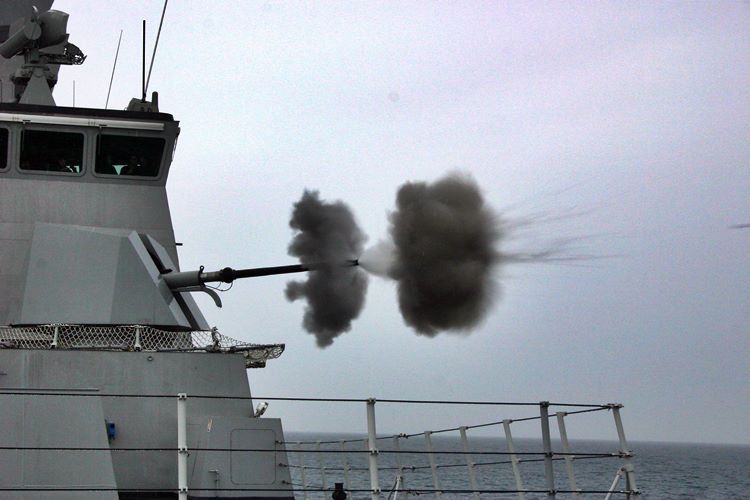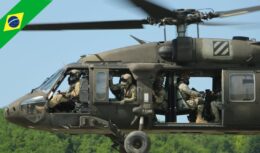
Brazilian Navy chooses four units of the 76 mm naval cannon to equip the Tamandaré Class frigates that will be built in Itajaí, SC
To arm its new Tamandaré Class frigates that will be built in Itajaí, the Brazilian Navy chose Leonardo's 76/62 naval cannon. Due to Covid-19, the Italian company and Thyssenkrupp, negotiated in long videoconferences, a contract that exceeds the value of 30 million euros, for the acquisition of four weapons with an option to supply two more units, being able to guarantee two more frigates in the future to the Águas Azuis Consortium.
Read also
- 50 high school and college job openings to work at multinational General Electric today, September 23
- Industrial group acquires Oceana shipyard in Santa Catarina and will take over the Navy frigates project
- The Brazilian Navy inaugurated today at the Complexo Naval de Itaguaí (CNI) in Rio de Janeiro, the Madeira Island Submarine Base (BSIM)
- Naval construction: recruitment of labor should start soon for the construction of ships for the Brazilian Navy at the shipyard in Santa Catarina
Leonardo's 76/62 naval cannon is recognized worldwide for its high fire capacity and shooting accuracy, managing to place multiple impacts on specific points of the target within a few seconds of engagement.
However, and despite this, precisely when the announcement of the 76/62 for Brazil a backstage rumor emerged, the possibility of the 76/62 naval gun chosen by Brazil would be undeniably linked to the question of cost.
Allowing several questions on the subject such as: could the Leonardo 76/62 naval cannon without liquid cooling maintain the same high volume of accurate shots that made this weapon a necessity for more than 50 Naval Institutions in its version cooled by salt water? In terms of the gun tube, air cooling shortens its lifespan.
Will the Brazilian ships maintain the ability to execute a high rate of fire in combat, or in the worst case scenario, the weapon could overheat and lock up right in the middle of a long exchange of fire? Does the air-cooling system, if it really exists, perform similarly or close to the liquid-cooled model?
About Leonardo's 76/62 naval gun
The 76 mm onboard gun is one of two medium calibers available for naval guns with fire sustaining capability, which is a fundamental requirement in any scenario involving multiple maneuver targets simultaneously, a common fact in asymmetric warfare scenarios.
The 76/62 cannon, without ammunition, weighs around eight tons, 80 rounds of ready-to-use ammunition are stored in its charging ring. The range goes from 16 km with standard ammunition up to 40 km with Volcano Smart Assisted Ammunition in the Strales version.
The compact configuration of the 76/62 naval cannon and its accessories (with a low weight of the set without ammunition) allowed it to add great firepower to modest platforms in terms of tonnage, something that guaranteed this weapon a great market success in practically five continents.











And the battlefield, all that matters is victory...
"Friendly nation" I don't believe you can…
The potential of this research and…
There is already a language translation app…
Developed countries now need a helping hand…
I've never seen a website publish so much zucchini...
It must be sold to the Australians, nation…
Much better than playing a lot…